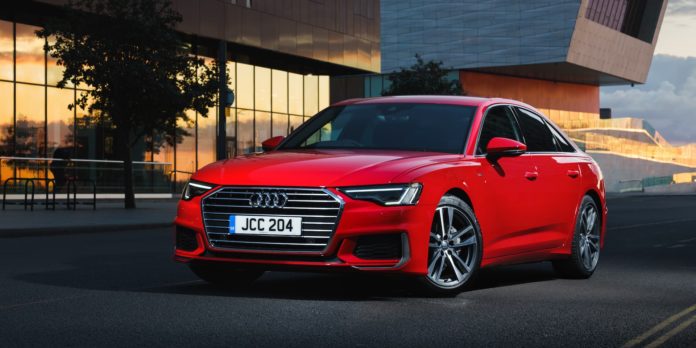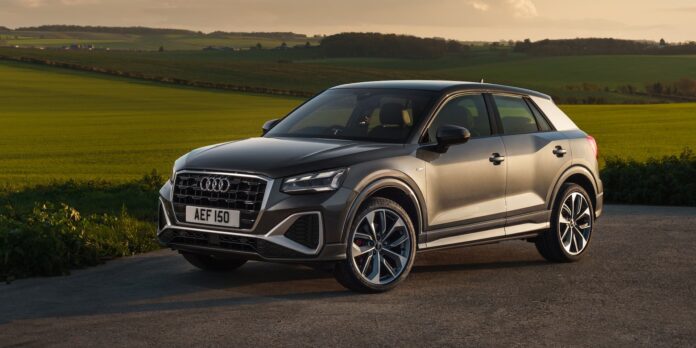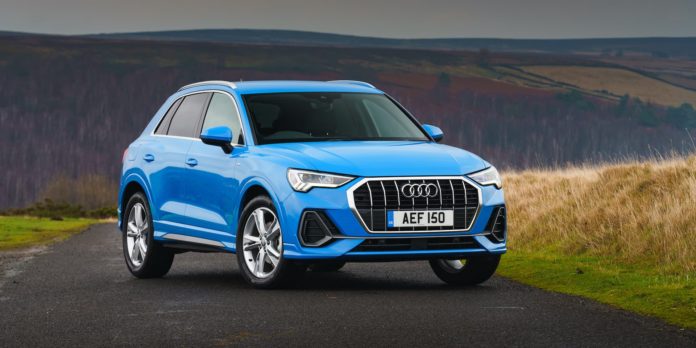For many years there were two German behemoths that divided up the premium market – BMW and Mercedes-Benz. Audi was a much smaller badge in the Volkswagen group that merited little attention.
Over the past 25 years, however, Audi has grown massively to turn the big two into a big three. It has done this by embracing technology and offering models that initially provided something different to the BMWs that every middle-manager wanted to drive, and latterly took over that much-vaunted status. In fact where for many years ‘typical BMW driver’ was used as a derogatory term (perhaps with a hint of jealousy), today it is just as often applied to Audi drivers.
Such criticisms make little dent on the reputation of a manufacturer that continues to produce impressive cars with bang up-to-date technology, and which while adopting the opportunities of electric power long before rivals, still offers a wide range of petrol and even diesel options.
Not for much longer though – Audi intends to launch its last ‘conventionally driven’ models in 2026 and have an all-electric model in every one of its lines by 2027. Plug-in hybrids are still very much in the immediate future plans, however, of a brand seemingly hedging its bets.
So who or what is Audi?
This section could probably be described as “A tale of two Audis”, because the company of today is much younger than its name or badge. The original version of Audi disappeared with the second world war, and the name was resurrected by Volkswagen in the 1960s.
Audi 1.0 was founded in 1909 by a German engineer named August Horch. It was Horch’s second attempt at starting a car company, as he left his original company – Horch – after falling out with his fellow directors. He used the name ‘Audi’ as his former partners prevented him using the Horch name again.
Audi flourished despite difficult conditions in Germany following the first world war. However, as part of a series of mergers and acquisitions in the early 1930s, Audi became part of a conglomerate called the Auto Union. This consisted of four German brands: Audi, DKW, Wanderer and – ironically – Horch.
Although the four brands all continued to build their own cars, each also carried the new logo of Auto Union – four interlocking rings to symbolise the four interlinked brands.
Despite the high profile and success of Auto Union, Audi suffered relative to its sister brands. Sales were well in decline even before production was inevitably turned over to manufacturing vehicles for the German military as the second world war loomed.
As with most German industrial operations, the second world war was a dark time for Auto Union. As many as seven labour camps provided thousands of prisoners to build vehicles and armaments for the Nazis. By the end of the war, the company was all but wiped out with most of its factories bombed and destroyed by the Allies.
After hostilities had ceased, Auto Union bosses set about restarting the company despite there being little more than the brand names left. What remained of its factories were located in the east of Germany, which fell under Soviet control after the war, so Auto Union re-established itself in the town of Ingolstadt in Bavaria, in the south of West Germany.
The revived Auto Union struggled and was bought out by Daimler-Benz (owners of Mercedes-Benz) in 1959, but Daimler quickly realised that it had no real need for Auto Union or its collection of brand names and sold it off to Volkswagen not five years later. VW wasn’t really interested in Auto Union, either, but it wanted to get its hands on the Ingolstadt factory to help meet booming worldwide demand for the Beetle.
Eventually, Volkswagen did decide to make a go of some of the cars that Auto Union had been developing under Daimler’s ownership. It kept the Auto Union logo, but ditched the name and resurrected the long-abandoned Audi brand instead. Audi 2.0 was born.
Through the 1970s, Audi grew and developed as a respected but conservative brand. To spice things up a bit, the company decided to use Volkswagen’s abandoned all-wheel drive military technology to go rallying.
Launched in 1980, the Audi Quattro was the first mainstream all-wheel-drive car on the market. It took a string of rallying successes and transformed Audi’s image from a fairly staid brand to a technological powerhouse. Soon afterwards, the slogan ‘Vorsprung durch Technik’ (progress through technology) made its debut and is still a core of Audi’s marketing today.


The 1990s saw Audi move upmarket to become a premium manufacturer, targeting the business market and the two German heavyweights of BMW and Mercedes-Benz. Sales were fuelled by an ever-increasing model range, and promoted by major sporting success – in the 15 years from 2000 to 2014, Audi won the Le Mans 24-hour race 13 times.
Advanced technology has continued to play a core role in Audi’s continually advancing sales ever since, such innovations as digital cockpit displays and various driving aids appearing on Audi models before many rivals. At one point in the 2000s, Audi produced more profit than all the other brands in the Volkswagen Group combined.
What models does Audi have and what else is coming?
The development of electric power has seen Audi’s enormous model range swell even further, although it seems to be in less of a hurry to drop its combustion-engined models than many other brands.
The main designators are A for traditional cars and Q for SUVs. The more performance-pitched models usually carry S designations (so the S4 is a faster version of the A4, for example), while the most highly potent versions are badged RS (so the RS 4 is an even faster version of the A4).
The company is currently reorganising its somewhat confusing model naming system to more clearly differentiate between combustion-powered and electric models. The new idea is that petrol/diesel/hybrid models will carry odd numbers (like A1, A3, A5 and A7), while electric models – called ‘e-tron’ in Audiland – will carry even numbers (like the new A6 e-tron saloon, and the Q4, Q6 and Q8 e-tron SUVs).
The smallest car in the Audi line-up is the A1, which is seen as the brand’s answer to BMW’s Mini. The current model is the second generation launched in late 2018 and only comes with petrol engines.
From there, the range progresses up through the A3, A4 (which is about to be replaced by the new A5), A6, A7 and A8. There are S versions of all of these, and RS models of all apart from the A1 and A8. The A6 is now at end of production, with the next-generation model set to be called A7. Presumably, the A8 will be re-named A9 at some point to fit into Audi’s new naming strategy. The new A6 is an electric model.
On the SUV side, we have the Q2, Q3, Q5, Q7 and Q8 in fossil-fuel versions, and the Q4, Q8 and Q8 e-tron electric models. Despite sharing a name, the Q8 and Q8 e-tron models are completely different vehicles. We can only assume that this will be sorted eventually as Audi’s new naming scheme finishes rolling out.
There’s also the e-tron GT, which is a sporty large electric saloon that’s more or less an Audi-badged and styled Porsche Taycan.
Audi’s sports models have disappeared, however. The R8 and TT have both ended production with no replacements in sight, while the A5 coupé and convertible models are also unlikely to be replaced.
Current Audi range on our Expert Rating Index
Where can I try a Audi car?
You won’t miss an Audi dealership – the brand has a distinctive design for its showrooms right down to the basic structure of the building, and they tend to dominate their surroundings. There are plenty of them around, the UK hosting around 130 Audi centres though more than 100 are in England.
What makes Audi different to the rest?
Audi built its reputation initially on being something different when any moderately successful business executive wanted to drive a BMW, and as the company’s reputation grew it bolstered it by its massive investment in technology.
Even today, when most upmarket manufacturers offer models with the latest electronic advances both in safety, driver aids and interior features such as infotainment and connectivity, you still expect to see the newest advances on an Audi first.
An Audi fact to impress your friends
Audi’s name is Latin – after founder August Horch left his original company, which he’d named after himself, the German courts determined that he couldn’t take the company name with him.
So Horch called a meeting in the apartment of a business friend in an effort to come up with a new name – as the business brains in the room struggled to come up with something suitable the friend’s son, who was quietly doing his Latin homework as the meeting went on, eventually spoke up and said that as Horch meant ‘hear’ in German, why not use the closest Latin translation, which was to ‘listen’ – ‘Audi’…

Summary
Audi is today one of the world’s major executive car brands with a huge reputation, and even though there are now a lot more Audis on the roads, many owners still feel that being behind the wheel of one is a little bit special.
Buy an Audi
If you’re looking to buy a new or used Audi, The Car Expert’s partners can help you find the right car.
Find a used Jaguar with Motors. Find out more
Find a new or used Jaguar with Auto Trader. Find out more
Find a new or used Jaguar with Carwow. Find out more
Lease an Audi
If you’re looking to lease a new Audi, The Car Expert’s partners can help you find a competitive deal.
Personal contract hire deals from Leasing.com. Find out more
Personal contract hire deals from Carparison Leasing. Find out more
Personal contract hire deals from Rivervale Leasing. Find out more


































